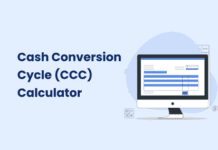Transactions take place all the time in a business – either your business earns or spends money. Organizing these transactions into insightful finance reports you can analyze is key to long-term success.
Finance reports provide a clear picture of your business’s financial performance. And there are dozens of useful ones you can track – each provides a clear view of different aspects of your business’s finances.
If you’re consistently keeping track of finance reports, expect to gain a deeper understanding of your organization’s past, present, and future economic outcomes. If you’re wondering which financial reports you should focus on the most, this article is for you.
Why Keep Track of Finance Reports
It’s essential to consider that there’s no wrong or right answer on which report trumps all the other. Every finance report you can generate provides value in its unique way. Ultimately, it all comes down to the needs of the reader.
The three major finance reports are the income statement, balance sheet, and cash flow statement. Together, these reports provide a complete picture of the results of business activities.
You can track other KPIs, but you won’t do without any of these three. Still, other reports are essential, especially if the situation calls for them.
Creating your business’s ideal cash flow requires a combination of forecasting and reporting. Finance teams use cash management tools like Peakflo for seamless reporting functions. With automation involved, finance teams can instantly generate insightful forecasts, driving better decisions.
Finance reports are essential when looking into performance at any moment. Let’s look at the five most important ones you can run for your business.
The Top Five Essential Finance Reports
1. Profit & Loss (Income) Statement
The profit & loss statement summarizes revenue, expenses, and profits over a period. You can break down the periods into any time intervals, like quarterly or annually. With a P&L statement, you can see the difference between what you’ve earned and lost over a period.
Simply put, this finance report shows you whether you’re making a profit or a loss. It also reveals which of your primary business activities takes the most expenditures. By reviewing a P&L statement, you get to see how much money it took to generate your revenue.
The Importance of a P&L Statement
Profitability is the primary goal of doing business. When your business earns consistent profits, everything else is likely to fall into place. Monitoring your income statements lets you formulate strategies that will increase profits. You either focus on increasing sales or decreasing costs.
You can make the most out of these reports by comparing them period over period. Let’s say you’ve implemented a strategy to decrease expenses. You can look at P&L results month-over-month to see if costs decrease continually. This way, you get to document if your strategies are paying off.
Companies typically generate P&L statements quarterly and annually. Comparing consecutive reports lets business leaders and investors track performance and make decisions.
What Makes Up a P&L Statement?
– Revenue
You can see revenue as the top-line item. It is classified as operating and non-operating. Operating revenue comes from the business’s core activities, like selling its goods. Non-operating revenue derives from non-core activities like interest earnings.
– Expenses
Every business wants to maximize revenue. But generating revenue requires activities that cost money. Expenses are the cost of doing those day-to-day activities. You also classify expenses as operating and non-operating. Operating expenses are costs from core activities, like paying employees and doing research & development. Non-operating expenses are costs unrelated to core functions, like paying interests.
– Net Income
You get the bottom-line net income by deducting all expenses from the top-line revenue. It’s the total amount of profit your business earns during a given period.
2. Balance Sheet
A balance sheet reflects a company’s assets, liabilities, and owner’s equity at any given time. It essentially shows what your company currently owns, owes, and how much is left for the company’s owners. Unlike an income statement, where reports cover periods, a balance sheet is a snapshot in time. It reveals your company’s finances at the exact moment of publication.
It’s derived from the fundamental accounting equation: assets = liabilities + owner’s equity. As such, it consists of two sides. The left side summarizes your business’s assets. The right side sums up the liabilities you owe plus the owner’s equity.
The Importance of a Balance Sheet
Like the P&L statement, you can compare your balance sheet period-over-period. Doing this lets you see the changes over time in crucial characteristics. Now you can define if your financial health improves or declines.
An ideal financial position requires having more assets than liabilities. A balance sheet outlines the value of your assets and liabilities in one place. So, it can immediately alert you if you begin owing more than you own. Debt is unavoidable and can be helpful so long as it’s sustainable. If debt rises to critical levels, your balance sheet can reveal it.
Your balance sheet also allows others to gauge your financial health. This lets them know if your business is a suitable investment. Investors can understand where their money goes by looking at your balance sheet.
What Makes Up a Balance Sheet?
– Assets
Assets are any items you own that give economic value to your company. The more it outweighs liability, the healthier your company’s finances become.
Assets can be current or long-term. Your business consumes current assets within a year. These include cash, inventory, and accounts receivables. Long-term assets have useful lives of more than one year. These include property and equipment.
– Liabilities
Liabilities are what you owe to others. They decrease your company’s value. Still, you incurred these liabilities to finance operations that will drive your business forward.
Liabilities can also be current or long-term. Current liabilities are short-term debt due within a year. These include utilities payable, interest payable, and accounts payable. Long-term liabilities are any liability that’s not due within one year.
– Owner’s Equity
The owner’s equity represents the owners’ stake in the business minus their withdrawals. It’s the amount left for the owners after subtracting the liabilities from the assets.
3. Cash Flow Statement
This finance report tells you how much money goes in and out of your business over a period. Unlike the two other significant financial statements, a cash flow statement only considers one thing: actual cash. It excludes every non-cash transaction, like depreciation and revenue made on credit.
You can make a case that this is the most vital of all finance reports and KPIs. By looking at a cash flow statement, you can see how much actual money flows into and out of your business. Organizations aim for a positive net cash flow, indicating that a company receives more money than it spends.
The Importance of a Cash Flow Statement
Yes, the P&L statement lets you gauge profitability. But who’s to say a good portion of those profits didn’t come from sales made on credit? Now, that’s not really a transparent picture of actual cash movement during a specific period.
A P&L statement might paint a good profitability picture, but you’ve got to ask how much of that is usable cash. A cash flow statement provides what a P&L statement doesn’t: precise cash value. With a cash flow statement, you’ll get a clear understanding of what you earn and spend to run your business.
Cash flow monitoring puts you in a better position to avoid cash shortages that force you to borrow money just to keep things going. You can also use past and present cash flow data to create liquidity projections that help in all sorts of budgeting.
What Makes Up a Cash Flow Statement?
A cash flow statement consists of three sections:
- Cash Flow from Operations
Operating cash flow consists of the actual amount of money a business generates or spends doing its regular business activities.
- Cash Flow from Investing
This section details the amount a business has generated or lost from investments. These investment assets include properties, equipment, and securities like stock.
- Cash Flow from Financing
Financing cash flow measures all cash activities involving debt and equity. These include inflows from issuing shares and outflows from dividend payments.
4. Net Profit Margin Over Time
So far, we’ve covered the three major finance reports. Still, other KPIs can be as valuable to understanding financial performance. One such KPI is net profit margin over time. Remember that third parties look at profits to measure performance and investment viability.
Net profit margin is a percentage of total revenue. This percentage is what the company gets to keep. The remaining is the cost of goods sold and the company’s operating expenses incurred for generating the total revenue.
The Significance of Net Profit Margin Over Time
Monitoring net profit over consecutive quarters or months allows businesses to improve pricing, expenses, and sales efficiency. Tracking profits on a P&L statement may not be enough to get a good view of profitability efficiency.
For example, we have two companies selling similar products, but one sells more than the other. Company A raked in $100,000 a year, while Company B only made $50,000 that same year.
However, Company A had a total expense of $60,000 while Company only had $10,000. Both firms made $40,000 in profit. You can see which company is making the most out of its revenue right away.
It helps to compare your profit margins to industry competitors or even your own at consecutive periods. Doing this allows you to see which steps to take to maximize profitability. You could either find ways to decrease expenses to boost profit margins. In contrast, you can increase costs to create higher-quality products and boost sales.
How to Calculate Net Profit Margin Over Time?
The formula for Net Profit Margin is:
Net Profit Margin % = (Net Income / Revenue) * 100
- Net Income
Net income is your P&L statement’s bottom line. It represents profitability after you deduct all expenses during a given period.
In the example above, Companies A & B had a net income of $40,000 during an annual period.
- Revenue
Net income is your P&L statement’s top line. It represents all the sales you’ve accumulated, including those on credit.
Company A had revenue of $100,000 while Company B only $50,000.
- Net Profit Margin (%)
Net Profit Margin is the percentage of revenue the company keeps as profit.
Let’s calculate the net profit margin of the two companies in our example:
Company A: ($40,000 / $100,000) * 100 = 40% net profit
Company B: ($40,000 / $50,000) * 100 = 80% net profit
Company B gets 80% of its total revenue as profits, while Company A only does 40%. We can conclude that Company B gets the most out of its revenue, despite Company A’s higher yields.
5. AR Days (Days Sales Outstanding)
Tracking profitability is essential, but it doesn’t provide a clear liquidity picture. That’s where KPIs like “AR days” come in.
AR days reflect the average days your invoices remain uncollected during a period. Ideal AR days vary by industry and can even go as specific as business model and size. A high AR days means a business takes longer to collect invoices. The opposite goes for low AR days.
The Significance of AR Days
This measurement has everything to do with gauging business cash flow. It lets you know if you’re taking the proper steps to ensure cash inflows remain ideal for your business. Essentially, AR days enable you to gauge these critical cash flow factors:
- How fast customers are paying
- The efficiency of your collection team and processes
- If you’re being too lenient on lengthy invoice turnovers
- Your firm’s liquidity, since AR days, is a direct reflection of cash inflows
- The cash basis sales you’ve made during a period
AR days can also provide a way to gauge customer satisfaction. As you know, customers prefer more extended time frames when dealing with payables.
Regularly generating this finance report allows for comparative analysis. A period-over-period study lets you spot negative trends and make the necessary tweaks to maximize liquidity.
How to Calculate AR Days Report?
You can calculate AR days using this formula:
AR Days = (Accounts Receivable Balance / Net Credit Sales) * Number of Days
- Accounts Receivable Balance
This is the total amount of uncollected invoices your business has accumulated over a given period.
Say that Company XYZ has an AR balance of $18,000 by the end of 2021. The owners want to get a clear picture of how efficient their team is at collecting invoices.
- Net Credit Sales
This variable represents the total credit sales your business has made minus returns and sales allowance over the same period.
During that same year (2021), Company XYZ had a total net credit sale of $190,000.
- Number of Days
A timeframe is always involved when calculating AR days. If you’re calculating for an annual period, the number of days would 365.
The year 2021 has 365 days starting from January 1st to December 31st.
- AR Days
Using the formula above, we divide the AR balance by net credit sales. We then multiply the result by the number of days in our chosen period.
($18,000 / $190,000) * 365 = 34.6 days
Calculating AR days for 2021 yields an average of 34.6 days. Company XYZ took an average of 34.6 days to collect invoices for the whole year.
Want to improve your AR days? Peakflo can help
If you’re having trouble staying on top of AR, we’ll streamline everything for you. Starting from invoice generation to collection, you get smooth workflows, letting you get paid faster and focus more on what you do best for your business.









![Why AI Sales Calls Are Making Good Sales Reps Even Better [2025 Guide] ai sales calls](https://cdn-kmjmp.nitrocdn.com/YvtqmrsiHUxqerlSiZgbfzqqTARWTElr/assets/images/optimized/rev-834053b/blog.peakflo.co/wp-content/uploads/2025/09/65168cf6-3001-4733-8cbc-12d5684cf449-218x150.webp)

































